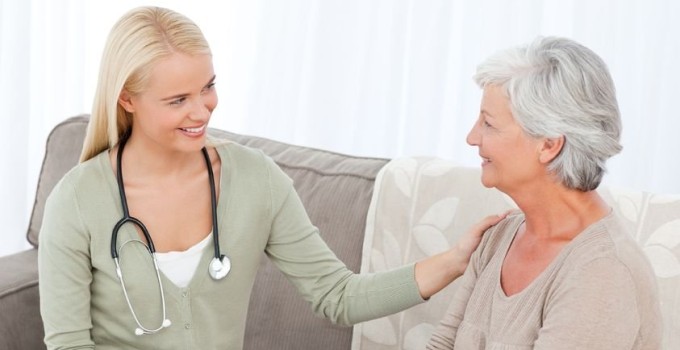Enuresis in older women
Age-related changes in the body affect the functioning of all systems. Urinary incontinence is common in older women. In medicine, the deviation is called "enuresis". The problem in older women is not only due to weakened pelvic floor muscles that are not able to hold urine, psychological factors, and other reasons. Treatment of enuresis in the elderly is carried out using drugs or folk remedies. In severe cases, when incontinence in the elderly is not amenable to any other therapy, an operation is performed.
After the age of 60, 30-40% of older women have urinary incontinence.
Causes of the problem
Enuresis in adults is associated with physiological changes in the body, in which the volume of the internal organ decreases or other changes. Often in grandmothers, urinary incontinence is caused by non-pathological reasons, after the elimination of which the problem disappears. In this case, they talk about temporary urinary incontinence in old age. The following causes of urinary incontinence in women of retirement age are distinguished:
- integrative disorders of the brain, in which the old woman occurs unconscious urination;
- diseases of an infectious nature that injure the urinary system;
- damage to the mucous membrane of the genital and urinary organs;
- prolonged treatment with medications that cause such a side effect;
- subsidence of puffiness;
- the development of polyuria, in which urine is produced in an increased amount;
- insufficient activity;
- disturbed balance of hormones;
- surgical interventions on the organs of the urinary system;
- chronic constipation.
Features of manifestation
Senile urinary incontinence is manifested by characteristic symptoms that a woman cannot but pay attention to. If urinary incontinence in an elderly woman is stressful, then no additional symptoms are noted. If the occurrence of enuresis in adults is associated with deviations of the pelvic organs and the urinary system, then other pathological symptoms are observed. Urinary incontinence in women after 50 years of age manifests itself in three forms, presented in the table.
Diagnostic procedures
 An examination is necessary to identify the causes of involuntary leakage of urine.
An examination is necessary to identify the causes of involuntary leakage of urine. For the treatment of urinary incontinence in women, it is necessary to consult a doctor and find out the causes of enuresis. They turn to a general practitioner, who, after taking an anamnesis and a physical examination, can refer to a specialized doctor. Physical examination involves the identification of pathologies of the pelvic organs and genitals. The doctor also examines the vagina with a special mirror to exclude the formation of fistulas and protrusions. Diagnosis of incontinence also includes the following procedures:
- palpation of the rectal zone;
- tests for the study of hormonal levels;
- passing urine for infectious lesions;
- cystoscopy.
In order to study the problem in detail, an elderly woman is recommended to keep a diary in which the frequency of urination is recorded, and under what circumstances the process occurs. Also in the diary is entered information about the amount of fluid drunk per day.
What to do about urinary incontinence in older women?
Daytime urinary incontinence in adults is treated based on the causes. Getting rid of urinary incontinence in older women is possible in different ways. All healing methods are aimed at strengthening the muscle tone of the bladder and increasing the sensitivity of the organ when it is filled with urine. Depending on the type of incontinence and its severity, drug or surgical therapy is prescribed.
General rules and therapeutic exercises
If an elderly woman has such a problem, then support from loved ones is required so that the problem does not worsen. It is required to change clothes more often, so that due to the smell that has arisen, additional experiences do not arise. Elderly women with a mild degree of incontinence are recommended special exercises that strengthen muscles. Systematic execution is necessary to achieve the desired result. The following are the most effective exercises:
- Task with a special cone. After purchasing a cone of the required weight in the store, it is inserted into the vagina and do simple things, walk around the house. During the procedure, it is important to keep the cone in the vagina with the muscles.
- electrical stimulation. Electrodes are inserted into the vagina, which selectively act on the muscle layer. Manipulation is carried out under medical conditions by a qualified urologist.
Medications
With urinary incontinence in women, various medications are used that act directly on the source of the problem. Medications allow you to restore normal blood flow in the pelvic organs, restore tissue and strengthen muscle tone. If a bacterial infection has joined, then it is required to treat incontinence in older women with antibacterial agents. The table lists the most commonly used drugs and their effects.
To stop changes in the body of an elderly woman, the doctor prescribes local remedies (ointments, gels, suppositories) that will save the patient from the problem. It is important to understand that some drugs for urinary incontinence in women are unable to completely cure the pathology, physiotherapy, special exercises and proper nutrition are required.




